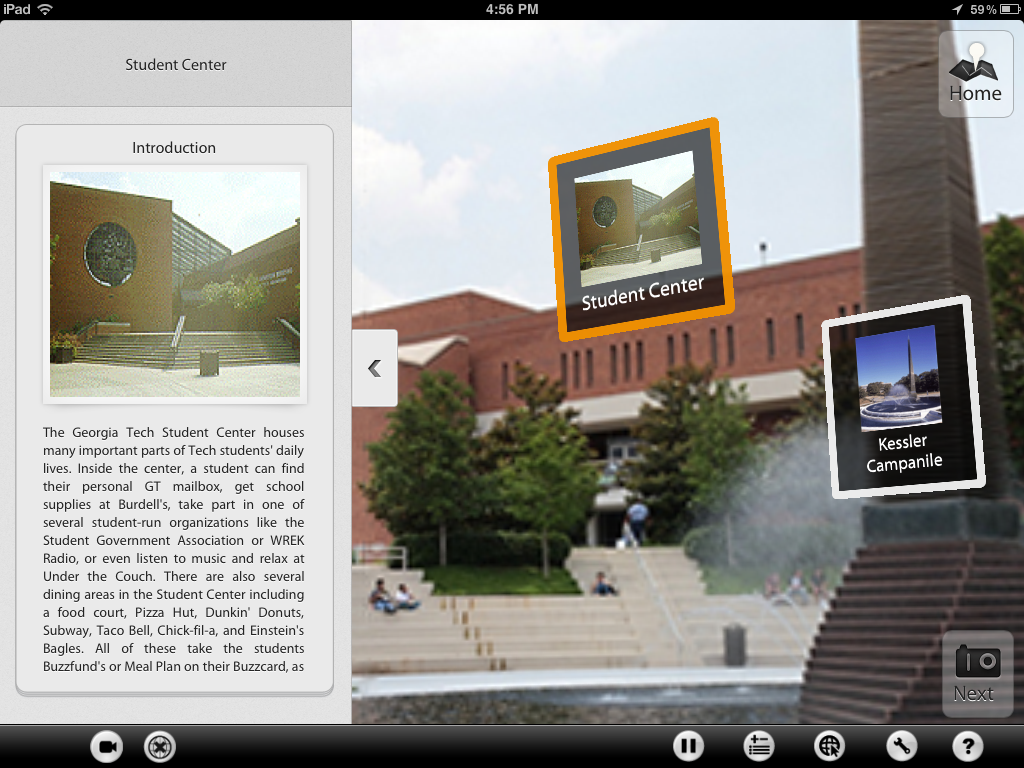Multiscale MR and GTtour
I first discovered the notion of multiscale methods in one of NECSI’s Complex Systems summer courses as a grad student. Not surprisingly they were extremely “mathy” which is great, but I got to thinking about what the qualitative properties of these methods might be. Then about a year or so later Mary Hegarty gave a talk at Georgia Tech about her work in spatial scale and, although these are slightly different notions of scale, I began to see a path forward. One prominent stop on that path was my PhD dissertation work on spatial scale in Mixed Reality. The connection is a simple one, if we experience space at different scales, and we use partially overlapping cognitive abilities at those different scales, then how do these play out in the interactive environments of Mixed Reality?
One of the major breakthroughs I had was in developing the notion of scale transitions. Multiscale MR experiences need some clear way to move the user through information at different spatial scales. There are emerging techniques and best practices for doing this, just like in the early days of filmmaking, and these need to be catalogued, expanded upon, and critiqued, just like cuts in film. My dissertation explored these ideas in the context of GTtour a MR tablet experience that let users take a virtual tour of the Georgia Tech campus. The good folks at RNOC helped me put together the tour. I’m not sure if it’s still in use but nonetheless it was really my first foray into mulitscale methods.

 D5 Creation
D5 Creation